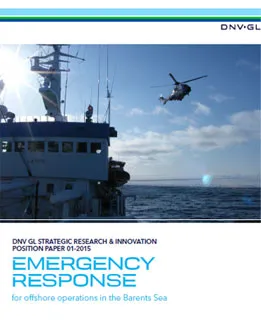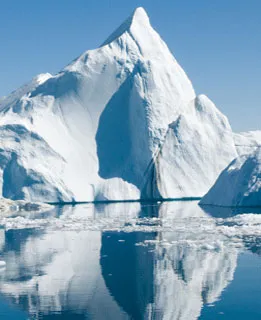As offshore field developments in the North and Norwegian Seas face maturity, operators on the Norwegian Continental Shelf (NCS) are looking to the more remote areas of the Barents Sea for further development. Here harsher environmental conditions, prolonged periods of darkness and long distances to shore make evacuation and rescue of personnel on Arctic offshore installations more challenging. A new DNV GL report published today examines the feasibility of emergency preparedness solutions and calls for the industry to collaborate on new response concepts.
DNV GL’s report ‘Emergency response for offshore operations in the Barents Sea’, examines the affect of wind speed, wave height and the presence of sea ice on the availability of evacuation and rescue resources in the Barents Sea and analyses the long-range rescue capability provided by search and rescue helicopters. Key challenges for offshore installations in Arctic waters include: sea spray icing, darkness, lack of offshore infrastructure and long distances between installations and support sites, sea ice, low temperatures and wind chill.
“Many questions about emergency response in the North have remained unanswered. We aim to help close that gap with this research. Our findings indicate that new emergency response concepts and technologies might be needed in more remote areas of the Barents Sea which are far from the coast and existing infrastructure,” says Liv Hovem, Senior Vice President and Director of Division - Europe and Africa, DNV GL - Oil & Gas.
“A coordinated approach to exploration activities in remote areas would help ensure an safe offshore operations in the Barents Sea. Operators could share emergency response resources and their associated costs to ensure sufficient response capacity. I look forward to contributing to ongoing discussions on how to ensure an adequate safety level in the Barents Sea at the Economist Arctic Summit today in Oslo.” she continues.
To support the outcomes of the position paper being presented at the Arctic Summit, DNV GL is also initiating a new Joint Industry Project (JIP) for Qualification of Arctic Emergency Reponse Concepts.
The aim of the JIP will be to determine which types of emergency concepts result in an satisfactory level of safety, while at the same time, assessing and comparing the economic feasibility of the different concepts.
The work is expected to be based on the same approach used in the development of the company’s Arctic Risk Map and PREGA, a tool to assess oil spill response gaps. It will focus on developing quantitative methods for analysing and visualising the performance of different emergency preparedness concepts. The approach will explore the effects of sharing resources and cooperation between industry stakeholders in order to balance performance and cost.
Live streaming of the Economist Arctic Summit in Oslo, Norway, is available to view here on Thursday 12 March. Liv Hovem will be speaking at 12.40 on Managing Risk in the Arctic.

